I have been asked a number of times about homeschooling. What it means to us and how we do it. There is no small, easy, quick answer. Prepare yourself for a typical long response. *smile*
 Building a Self Designed Boat
Building a Self Designed Boat This same boy then went on to build a 14" wing span airplane out of 2'x4' in my basement!!! This airplane was equipped with two old baby carseats and had a running propeller run by an old electric blender! That is his giftings. See the science, mechanics, and electronics that were taking place outside the 'classroom'!
This same boy then went on to build a 14" wing span airplane out of 2'x4' in my basement!!! This airplane was equipped with two old baby carseats and had a running propeller run by an old electric blender! That is his giftings. See the science, mechanics, and electronics that were taking place outside the 'classroom'!
While building our house our boys learned a ton of skills! They observed so much and were also able to help on simple jobs.




She gave him a deal of buying the goats for $50 each (instead of the typical $110). In the course of just over 3 months, he learned about the value of a dollar, the value of hardearned money, how to work towards something he really wanted. He also learned to clean a barn, how to look after goats, and how baby goats are born.
During his three years of raising those goats he learned even more: how to heal a goat from colic - very scary for him; how to trim their hooves; how to build a corral and a goat house and how to take his goats without a leash for walks through the valleys, meadows, and back roads of where we lived.
On top of this, he was mentored by this lady who was to become a good friend. She would take our boys for walks and as they walked she would educate them. It wasn't about education to her; it was a way of life. Nature at its finest. She couldn't not share with them; there was so much to see and learn. During the walks they learned all about what plants could be eaten and where to find water when there was no water in sight. They learned about animals and birds, nesting habits, and survival methods. This was a very rewarding experience for the boys. All this biology from real life.
I also read an amazingly inspiring story of a family that took their homeschooled kids and headed for a rural mountain life. These children were not schooled from within textbooks, but yet three went on to be accepted at Harvard. They learned chemistry and biology while raising their cattle and planting their crops; they learned about geometry while building their barns; Their book Homeschooling For Excellence will inspire you.
That fall when I came back to school, I had found another method of teaching the children. We learned about Five In A Row - this is a wonderful, gentle approach to learning. It is a unit study approach - one book basically does it all. We would sit on the couch and read a story and then this was the spring board to many wonderful activities. While reading about Madeline (that famous little girl from France) - we learned about Symmetry, and ate Baguettes and eclairs, and read about France.
 While reading about Very Last First Time - we read about the igloos and Inuit and living in the North. The boys made edible glaciers and sculpted igloos from sugar cubes.
While reading about Very Last First Time - we read about the igloos and Inuit and living in the North. The boys made edible glaciers and sculpted igloos from sugar cubes.
As well as reading all of these wonderful classic children's stories, and then using them to learn so many things of a Social Study, Artistic, Applied Math, Science nature, we also did traditional math and phonics. But I changed my approach.
I began reading to them more. I read picture books and novels daily. I relaxed on how early they had to read. I started exposing them to sounds and words, but took the pressure off on them having to know what to do with those sounds.
I have now had four children learn to read. My first learnt to read at 5, but did not enjoy the process. My second, third, and fourth all read lightly by seven but were reading fluently and enjoying it immensely by age nine. That to me is the key. Are they enjoying it?
While they may have not been trained early, they made up for it pretty quickly! By age nine, they are introduced to their first classic: Pinnochio and they really enjoy it. Tom Sawyer, Secret Garden, 20,000 Leagues Under the Sea, Robinson Crusoe, Treasure Island, Little Princess, Huckleberry Finn, Oliver Twist, - these all follow, plus many more.

My Bookworm
After that, they are given a stack of books each year that I expect them to read. Reading is a wonderful way to learn! Science, history, nature, biographies - it can all come from books. By the time they have reached sixteen they have read at least two hundred books, plus what they choose to read. Reading quickly becomes a choice - not a chore - because I offer them such exciting choices of reads.
The wonderful thing is, no matter if a child is a 'late reader' (according to whose standards???) or not, he can still be a book worm. This child pictured above, didn't take off in reading until he was 9 years old. At that point, he was stumbling along reading Magic Treehouse books. He was not fluent. Then one day he decided he wanted to read The Lion, the Witch and The Wardrobe by C.S. Lewis. This was enough for him to get determined. He picked up that book and worked and struggled and made his way through it. He did it. He probably missed 20% (at least) of the words, but he persevered and understood the story. He did it quickly too. He then moved onto the next books in the Narnia series.
A book worm was born! This child can be seen up before dawn reading, reading while working, reading while playing, eating, and sitting in the car. He always has a stack of books. When he goes to read his daily reading, he will take a stack of books that he is working on. He reads a chapter or two from each book. This way he works his way through Biology, Science, Nature, History, Biographies, Classic Literature and Pleasure.
Even though our oldest is nearly 17, I still read to him. He sits with his brothers of 5, 8,11, and 14 and nightly we continue through a novel. Once that is done, we begin another. We do tend to miss many nights due to life taking over, but as soon as we can get back to it, we do! It doesn't matter if you only read four or five novels a year; that is four or five novels they wouldn't have heard if you hadn't read to them.
It was my grade five and seven teacher (the same man) that exposed me to the most wonderful 'living books'. Roll of Thunder Hear My Cry; The Family Under the Bridge; The Upstairs Room - these books were about Black America and the Depression; A homeless family in Paris; and two sisters hidden away during World War II. I hunted these books down when I was an adult and my children have now had the pleasure of hearing them read aloud.
I always try to find books that will impact them in some way. Recently we read - I Am David - a book about a little boy that was raised in a concentration camp in Eastern Europe. It is a book about now. This child escapes and makes his way to Denmark on foot. It is a book about hope. We discover the world through the eyes of a child. A child who has never been exposed to anything with colour or laughter. A child who doesn't know how to smile. It is an amazing read. It held us all - from ages 8 - 16 enthralled til the last page.
If you are interested, there are book lists of books that are not twaddle - I'll get into that one another day. That is a post by itself.

When the children have quality books read to them, they tend to reenact the stories. The story sticks to them. Here the boys are playing Tom Sawyer and Huckleberry Finn.
As well as reading to the boys, and following their interests, I began letting life take the lead. One day, our boys were interested in putting on a restaurant. So each of the three older boys did this. Our second son put on a restaurant called the Black Cat Cafe. They wrote their own menus, made the menus, made the restaurant sign, cooked the food, served the meals and then enjoyed eating the food with us. They were a great success!

Making Croutons For His Caesar Salad

Reading the Menu Choices to His Customers

Serving the Meals
As time went by, we explored other methods. Methods that we have pretty much kept to. Charlotte Mason was a woman in the 1800's who pretty much pioneered the way for Homeschoolers. After discovering the gentle method of schooling my 6 and 8 year olds with the Five in a Row curriculum and loving school again, I was introduced to Charlotte Mason.
Her methods include teaching a child to write by having them copy from great works, narration as a way of having them show you what they have retained, versus having them do tests which only shows you if they have retained the ten or twenty questions you are asking them.
You would be amazed when you read to a child and then ask them to narrate back to you, how much they have kept in their heads, but if you follow the traditional method of giving each child the same set of questions to answer on a test, you may find they will not be able to answer them all. Different parts of the readings stuck with different children.
Instead of using textbooks, we began using Living Books - books that bring the subject alive! Our kids love to read the books I give them because they are full of life. More on that one later. Do you know how much more they retain about a topic if it is read to them from an interesting historical fiction versus a textbook? Because both my son and I are interested in the human interest side (me) and army side (him) of WWII, do you know how many books we have on this topic! Tons!
The nature walks our children took and the nature journals they kept - those are all Charlotte Mason's methods of teaching science to the children.

Seven Year Old Drawing of a Bald Eagle He Saw

Three Year Old Drawing of Red Clover
We pressed a bunch of different wildflowers we found. In my slow manner it took me about another year to actually get them out of the encyclopedias and actually draw them. But we did! Even the littlest ones are capable of copying the flower and then copying your writing to create a label.
Something else we had a lot of fun doing and need to resurrect are Artist Studies. When my 11 year old was three years old and he walked by a self portrait of Albrecht Durer, he was able to point out to his dad who did it. His dad had been away on a work trip and was quite surprised. Our children love the artist and composer studies we do.
It is so simple to introduce a child to an artist - we read about the artist through wonderful children's books and the simply have the children recreate what they have seen - another form of narration. You would be amazed at some of the wonderful works they have done. I will follow with some examples of work that the boys have done to show you how capable they are.

A Nine Year Old's Replica of the Mona Lisa
The important thing to realize is that we are surrounded by art and music from the past, and until someone opens our children's eyes, they simply will not 'see' it. Once they are aware of it, you will be amazed how they notice it. One day our seven year old was walking through Walmart and he was excited when he heard Beethovens Fifth Symphony. Not a hard thing to recognize - if you have been exposed to it.
As time as gone by and life has put things in our way, we have moved with the current. We are not able to do all things all the time, but we have a general idea of what we like and believe in. Coming out of textbooks was, for us, liberating. We began having fun with science and history while learning about other things, like the Ancient Greeks, Romans and Egyptians. We read tons of books and did crafts and timelines and activities that allowed all the children to work together as a group - rather than having each child in their own dry textbook learning 'age appropriate' stuff.

Learning About Columns in Ancient Greece
Here the boys have been stacking books on top of a column. They learned how and why the Greek columns could carry so much weight. They kept on adding books until they had a stack 24" high!! We would not have remembered this fact if we had simply read it from a book; by doing it they got involved and experienced the fact. This was during a time that we did a unit study on Ancient History. It took us a number of years to get through Egypt, Greece, and Rome, but we had fun during it!
When I was pregnant with our sixth child, the older three boys created the most remarkable 'baby books'. We went online weekly and learned about the stage of development our baby was at. They would then narrate to me and I would type up the information. The older ones did their own typing. They would then create an illustration for the book based on what they saw online. When the baby was born they continued their developmental books until he had his third birthday. They now have the most incredible biology books showing the development of a child from conception to three years. Can you imagine how wonderful and helpful these books will be when they are parents and want to share the miracle of birth with their own children?
 A Baby Journal by a 13 year Old
A Baby Journal by a 13 year Old
 Baby Journal by an 11 Year Old
Baby Journal by an 11 Year OldWhen we went on our road trip last year to California, the boys created really nice trip journals. This is the second trip we have taken where they have had to make journals from their trips. This includes me taking pictures, picking up post cards and stickers and then them drawing pictures at home and writing or narrating their thoughts for each picture. This is all compiled in a wonderful hardbound book by blurb.com This project is art, language, social studies and more, all in one!



Our children also have a healthy amount of workbooks. They use them for Math and some of their Language Arts; the majority of what they learn comes from Real Life and Books. They also learn French (when they are older) by computer program and how to type.
 Balancing Two Students at the Same Time
Balancing Two Students at the Same Time
Last but not least, there are Life Skills. Our children are taught how to help from as soon as they are able. A two year old is quite capable of putting rags or dishclothes in a drawer. A four year old can run a vacuum, fold and delivery laundry, or set a dinner table. An eight year old can run the washing machine, stack firewood, empty a dishwasher and assist in cleaning a kitchen. And an 11 or 14 year old are quite capable of cooking meals, taking care of little brothers and sisters, doing yard work, cleaning bathrooms, or learning about your family business.
My son was recently at his play practice and when he had finished trying on his costume the costume designer complimented him by saying how he was going to make someone a good husband one day. Why? Because he folded his clothes. We had a laugh when he got home, and I asked him if he had told her that he can also cook a mean roast beef dinner! *laugh*
Such a simple thing was noticed by the world. Goodness! Children are capable of learning so much and being such a valuable help. Not only that, they also *enjoy* how useful and *needed* they are! It makes them part of the family! And when they are grown up they don't have to start all over learning how to do things. The basics are understood.

So that in a large nutshell is how we have moved through homeschooling over the years.

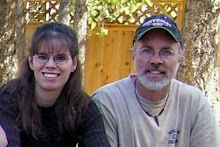

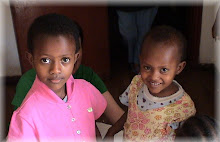
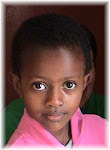
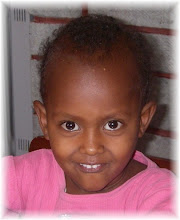


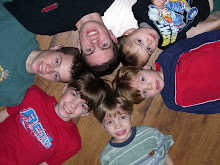

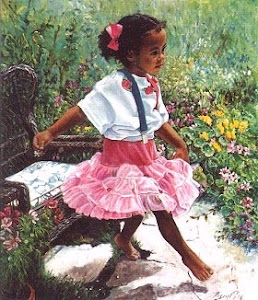








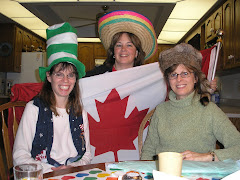
4 comments:
Thank you for this awesome post! Really enjoyed a look into your homeschooling life!
I will have many more questions for you!!!
Sandi
I LOVED, that post!! Really interesting and touching to see how you homeschool your children. Just can't say enough! Thanks!
Natasha
I love this post! It is encouraging and inspiring to me! It also reminds me that I should do a post on the Africa study we are doing right now in our homeschool. It will take me a while to get around to that so in the meantime, I will e-mail you about it!
Great post. We made a sugar cube pyramid during an Ancient Egypt unit (from Story of the World) and the thing is still sitting in the school room a year later. What wonderful memories your kids will have!
Post a Comment